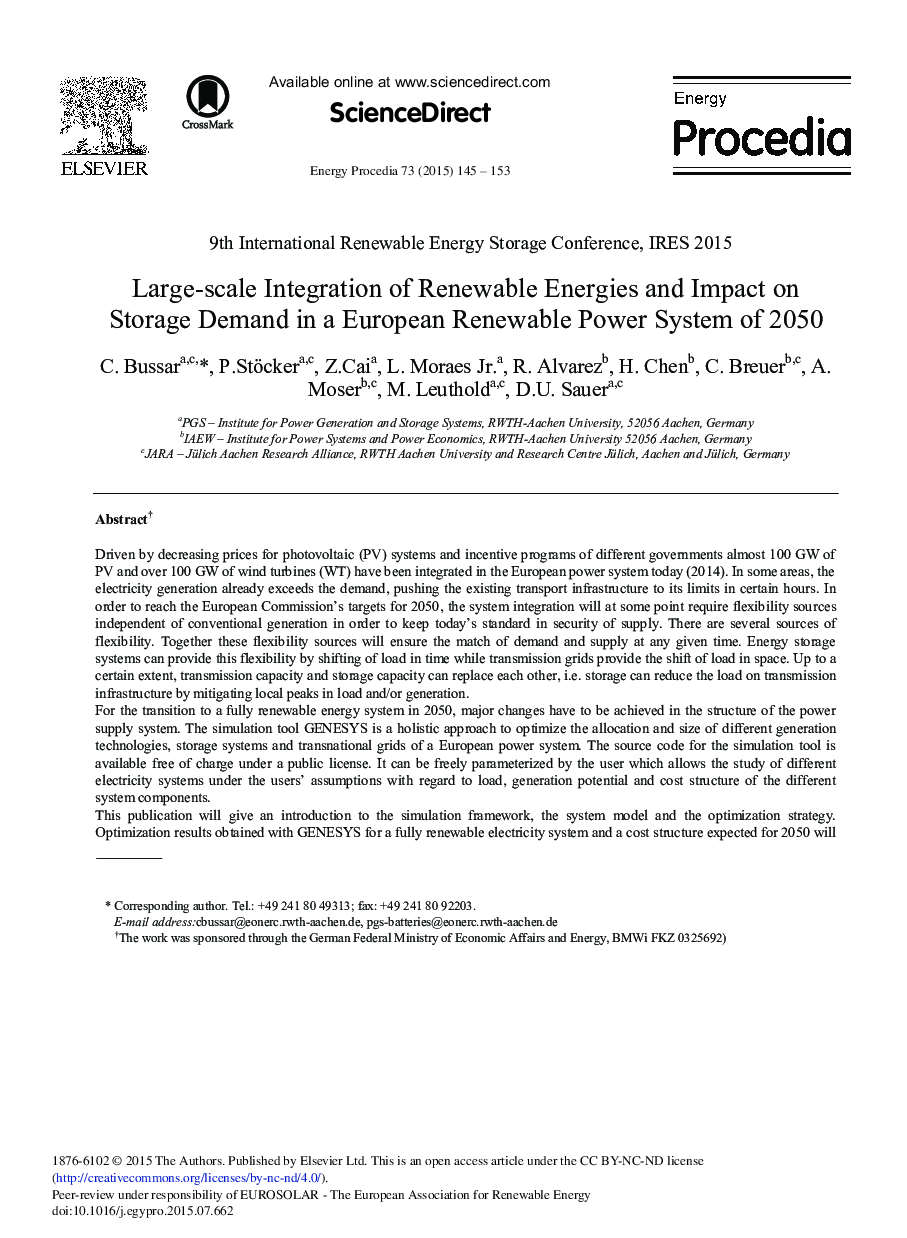| Article ID | Journal | Published Year | Pages | File Type |
|---|---|---|---|---|
| 1510009 | Energy Procedia | 2015 | 9 Pages |
Driven1 by decreasing prices for photovoltaic (PV) systems and incentive programs of different governments almost 100 GW of PV and over 100 GW of wind turbines (WT) have been integrated in the European power system today (2014). In some areas, the electricity generation already exceeds the demand, pushing the existing transport infrastructure to its limits in certain hours. In order to reach the European Commission's targets for 2050, the system integration will at some point require flexibility sources independent of conventional generation in order to keep today's standard in security of supply. There are several sources of flexibility. Together these flexibility sources will ensure the match of demand and supply at any given time. Energy storage systems can provide this flexibility by shifting of load in time while transmission grids provide the shift of load in space. Up to a certain extent, transmission capacity and storage capacity can replace each other, i.e. storage can reduce the load on transmission infrastructure by mitigating local peaks in load and/or generation.For the transition to a fully renewable energy system in 2050, major changes have to be achieved in the structure of the power supply system. The simulation tool GENESYS is a holistic approach to optimize the allocation and size of different generation technologies, storage systems and transnational grids of a European power system. The source code for the simulation tool is available free of charge under a public license. It can be freely parameterized by the user which allows the study of different electricity systems under the users’ assumptions with regard to load, generation potential and cost structure of the different system components.This publication will give an introduction to the simulation framework, the system model and the optimization strategy. Optimization results obtained with GENESYS for a fully renewable electricity system and a cost structure expected for 2050 will be presented together with sensitivity analyses investigating the main assumptions. The focus is the optimal allocation of PV and WT in a European electricity system, the resulting demand for storage capacities of different technologies and the capacity of the overlay grid.
